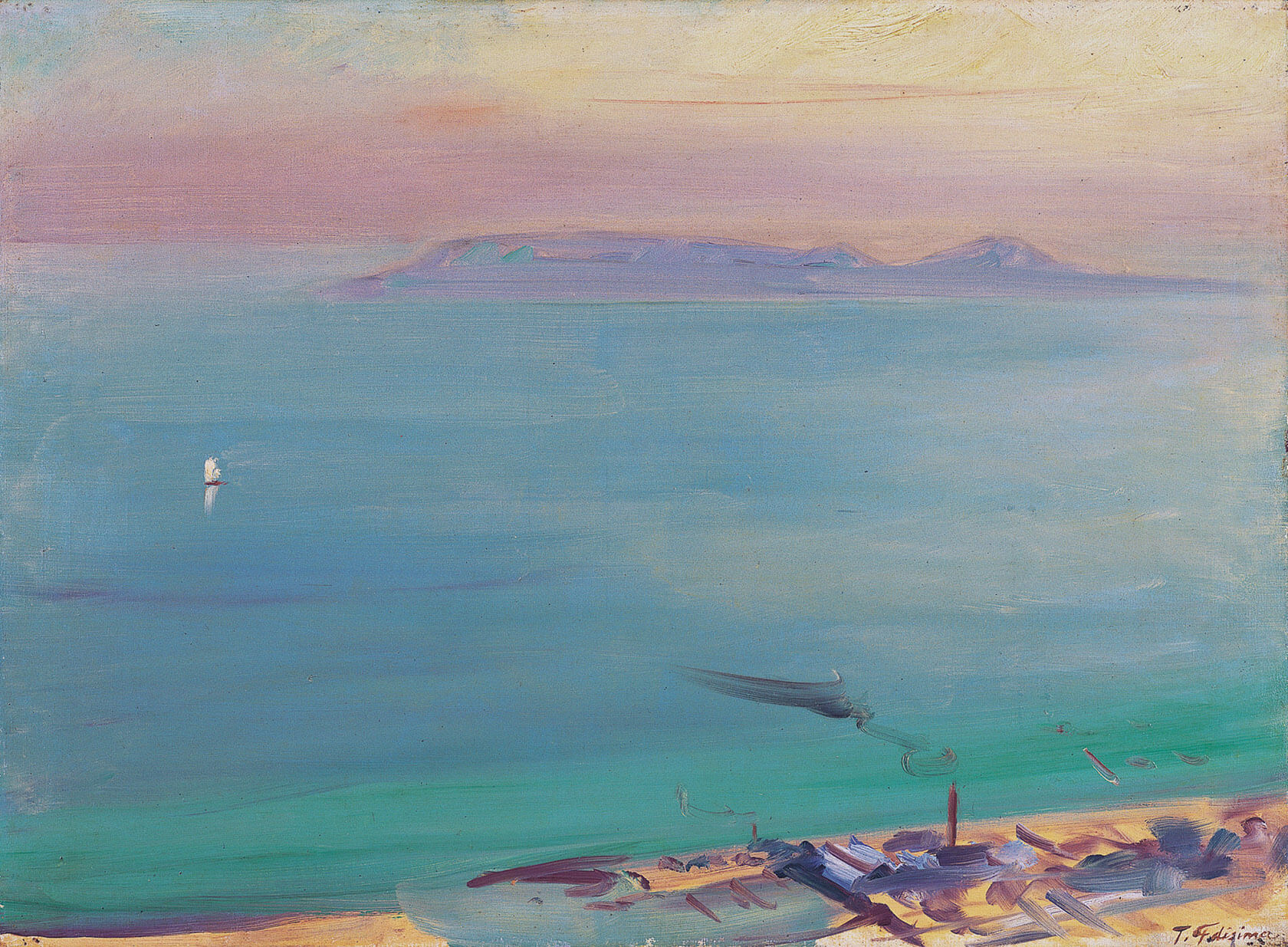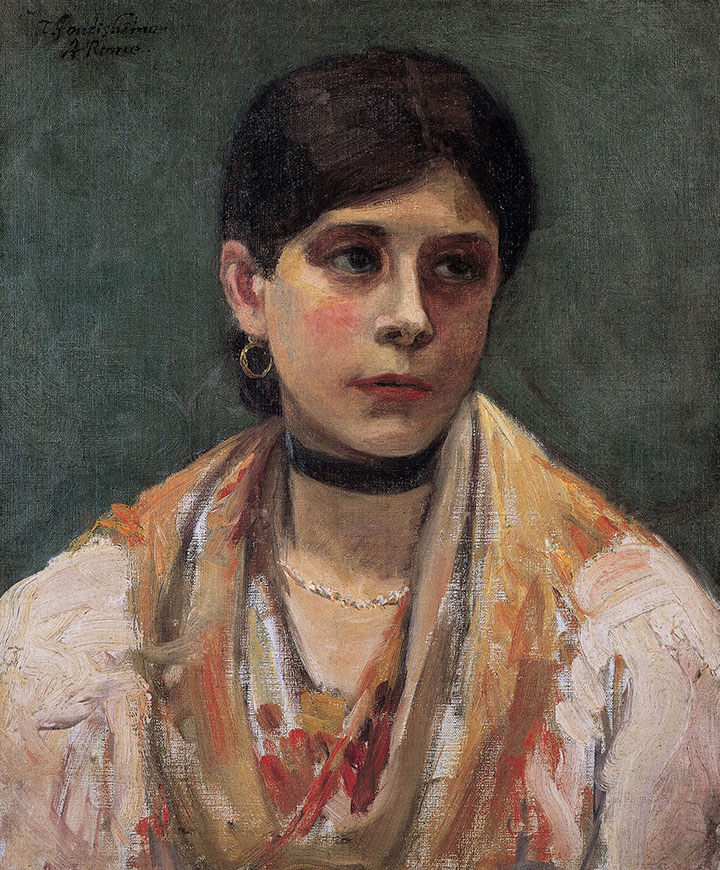Fujishima Takeji liked to use the French word simplicité. It means to simplify, and the text quoted above was what he said when he looked back on his life as an artist and described the final direction his work had taken. Two years after he published these words, in the summer of 1932, he produced this painting, Distant View from Yashima.
Yashima, a tableland-like peninsula that juts out south to north, into the Inland Sea, is located in Kagawa Prefecture, Shikoku, east of Takamatsu. Fujishima spent nearly a month living in the Yashima-Kan, a Japanese inn near the top of Yashima. There, his records tell us, he produced “thirty-four or thirty-five sketches, large and small.” Reading his journals from this period, we discover that he was captivated by how colors changed in morning and evening and tried to capture their changes. He rose early in the morning to paint the sun rising directly to the east over Gokenzan (Mt. Goken), a peak sandwiching Dan-no-Ura inlet, the setting of the battle in the Tale of Heike. “At noon, under direct sunlight, the colors fade and the scenery is at its most ordinary,” he said. That, it seems, is when he would take a nap. Then, in the evening, he turned to the west, toward Megijima Island and the city of Takamatsu, to enjoy painting the setting sun and dusk. Distant View from Yashima belongs to that second category. The sun is setting behind Megijima. The artist savored deeply the moment by moment changes in the atmosphere and the surface of the sea.

Fujishima did not, however, simply reproduce the landscape he saw. When we read his writing about how he worked from that period, we learn that he made major changes in the foreground and background. In the immediate foreground we see the cliffs of Yashima, where several villages and factories were located near the seashore. Fujishima tidied them up to create a pleasing rhythm. Beyond Megijima, several other islands and the mountains of the Chugoku region on Honshu, the main island of Japan were visible. “The landscape was interesting, but the scene contained too much clutter to become a painting,” he wrote. So he boldly removed the excess. Only the lingering smoke from a single factory chimney and one sailboat are retained as accents. In this way he pared down and cleaned up the work as a whole, creating a painting that symbolizes the passage of time and the turning of the earth as dusk approaches through the haze.
Distant View from Yashima is scheduled to appear in an exhibition of Japanese modern Western-style art soon to open at the Museum of National Taipei University of Education (October 6, 2017 to January 7, 2018). In addition, the Fujishima Takeji: The 150th Anniversary of His Birth exhibition is being held, until September 18, at the Nerima Art Museum. That comprehensive exhibition, which includes works from his early to late periods, is scheduled to travel to the Kagoshima City Museum of Art, in the city of the artist’s birth (September 29 to November 5) and then (November 18 to January 28, 2018) to the Kobe City Koiso Memorial Museum of Art in Kobe, whose port the artist loved. These exhibitions will be excellent opportunities to experience what Fujishima Takeji called simplicité. We hope to see you there.
Curator:Tsuyoshi Kaizuka

Oil on canvas












When we speak of the art of painting, simplicité is, I believe, most important. Our first priority must be the composition of the picture plane, and to that end the artist must employ his ability to simplify by blurring tangled threads. . . . My job, both now and in the future, whether I am painting landscapes or painting portraits, is to remove every bit of excess and by doing so to paint only what must be painted.
“Struggling to Leave Footprints,” Bijutsu shinron [New Discourses on Art], May 1930.